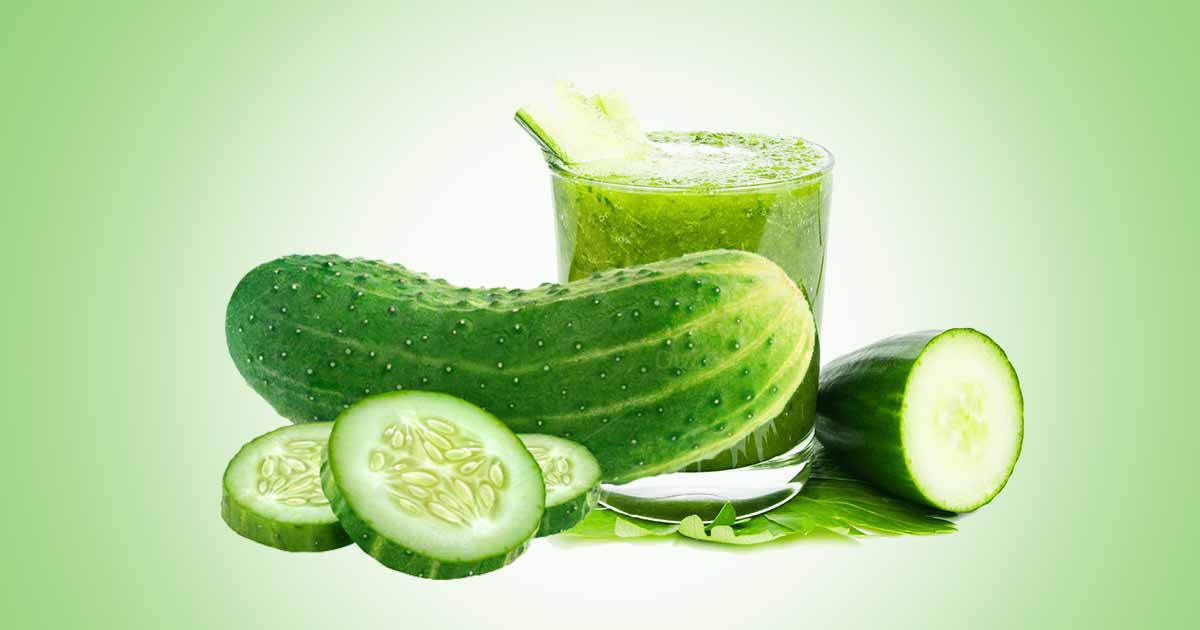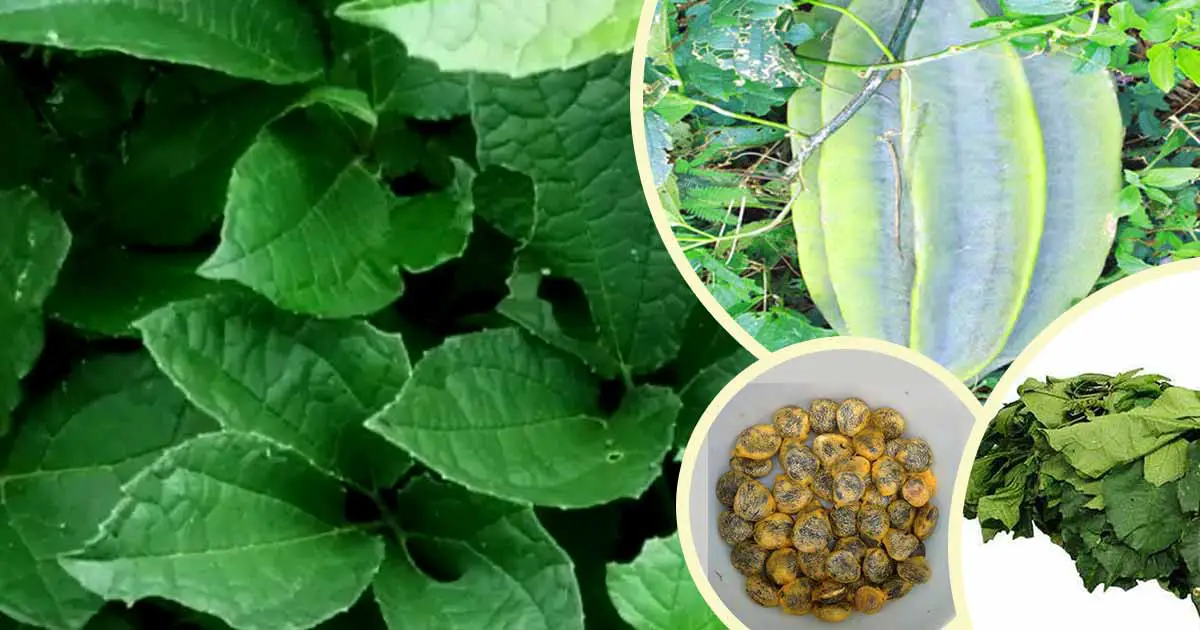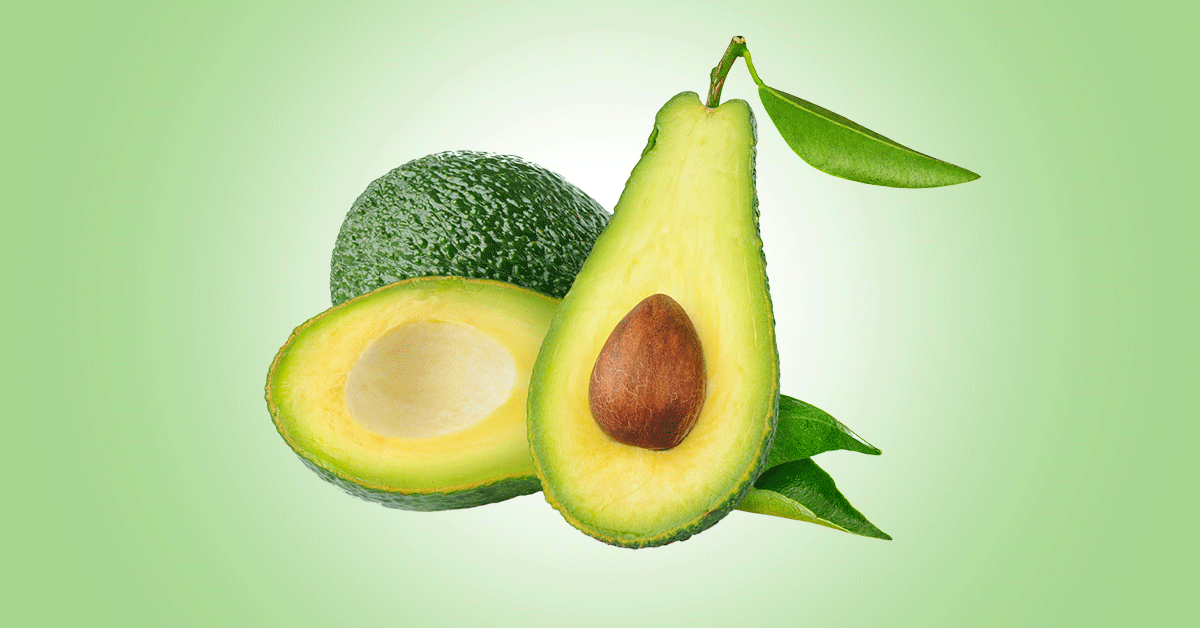Cucumber (Cucumis sativus L.) is a fruit consumed as a vegetable. It belongs to the cucurbit family (Cucurbitaceae) alongside fluted pumpkin, cantaloupe, watermelon, squashes, muskmelon, and loofah gourd. The edible fruit can be seedless, seeded, or mini.
It may have originated from India (south foot of the Himalayas), or possibly Burma. Columbus brought it with other vegetables to the New World.
Cucumis sativus is a coarse annual creeping vine. The leaves are large, prickly, hairy triangular and forms a canopy over the fruit. The yellow flowers can be the male or female. Females flowers have swollen ovary at the base and matures to become the edible fruit.
The fruit is elongated, and round. It is called false berry or pepo. Immature fruit has green rind due to chlorophyll. It turns to yellow-white on maturity. The fruit has soft tissue with seeds.
Varieties
Regular cucumber
Have actual seeds (seeded cucumber). It is short and uniformly cylindrical. The skin is thick, deep green, with light green stripes, rough surfaces with strong trichomes. The skin is not digestible and is bitter. It needs to be peeled before eating.
English cucumber
Has no seeds (seedless cucumber) or barely distinguishable atrophic seeds. It is long and cylindrical with a short, narrow neck at the stem end. The skin is smooth, thin, and uniformly green. It is not bitter and does not need to be peeled before eating.
Like most plants in the Cucurbitaceae family, cucumber has high water content, as much as 95% water. This makes it a suitable fruit to maintain hydration in the body.
The important varieties are English, garden, Persian, mini, or lemon variety. The world’s largest producers of cucumber are China, India, Russia, and the United States.
Cucumber can be consumed raw, or used in vegetable salads, soups, lemonades, sauces, sandwiches, and pickles. It can be processed into juice, oil, jam, and powders. In salads, they can be combined with seasame oil, soy sauce, rice vinegar, tomatoes, basil, fresh lemon juice, onions, extra-virgin olive oil, garlic, chiles.
Cucumis sativus has been used in home remedies. It is used to manage sun stroke, reduce swelling and puffiness in the eyes. The seed are also used with sugar to control intestinal worms, tapeworms. The boiled cucumber leaves and cumin seed roasted powder are used for throat infections.
Types of Cucumber
- Pickling cucumbers: this type is lighter green in color, shorter, thinner-skinned. Primarily, used for processing and pickling.
- Slicing (fresh consumption) cucumbers: thick, uniform, smooth, straight, dark green skins, and longer than pickling types. Sold fresh for consumption as a salad item.
- Greenhouse cultivars: has a long, relatively narrow fruits, fairly smooth-skinned, with rounded ends. Can be Dutch greenhouse cultivars, or Japanese greenhouse cucumbers.
- Ball and Round (also “lemon cucumber”): they are pleasant but lack the normal cucumber flavor.
- Oriental (also called Japanese or Asian): long type, usually thin and straight, milder flavor than standard types.
- The European (aka Dutch, hothouse, greenhouse, hydroponic): seedless, fruits develop slender, smooth appearance.
- The Armenian: long, often much curved type, owing to its shape, also called the “serpent” or “snake” cucumber.
- Chinese Yellow cucumbers: oval-shaped, grows up to 25 cm in length, green when young, then turns lemon-orange, when mature. The skin is not bitter, so it can be eaten without peeling.
Composition
Nutritional Content
A 100g of edible cucumber contains 0.65 g of proteins, 0.1 g of fats, 0.5 g of dietary fiber, 1.67 g of sugars, 3.63 g of carbohydrates, 95.23 g of water, and 15 kcal of energy.
Minerals: Calcium (16 mg), potassium (147 mg), phosphorus (24 mg), magnesium (13 mg) and small quantities of iron, sodium, zinc, selenium, and copper.
Vitamins: vitamin C (2.8 mg), thiamine, riboflavin, niacin, vitamin B-6, total folates, choline, beta-carotene, vitamin A, E, K, lutein + zeaxanthin, and beta-cyptoxanthin.
Bioactive Compounds
Cucumis sativus contains tannins, cardiac glycosides, terpenoides, carbohydrates, resins, saponins, and phytosterols.
The triterpenes include cucurbitacin A, cucurbitacin B, cucurbita-cin C, cucurbitacin D. There are also lignans such as pinoresinol, lariciresinol and secoisolariciresinol. Cucurbitacin C impacts the bitter taste to some varieties of the fruit.
Flavonoids includes apigenin, luteolin, diosmetin, fisetin, quercetin, kaempferol, naringenin, theaflavanoside I, vicenin are reported.
There are organic compounds (unsaturated aldehydes) such as (E, Z)-nona-2,6-dienal, and the cis- and trans- isomers of 2-nonenal. This gives the mild melon aroma to Cucumis sativus.
Health Benefits of Cucumber
Hydrating effect: Cucumber contains a high volume of water. Water keeps the body hydrated, cleanses the system and remove accumulated waste products and chemical toxins from the body.
Blood pressure control: the fruit contains high quantity of potassium and magnesium. Potassium helps to decrease blood pressure, by increasing the excretion of sodium and relaxing the blood vessel walls. It also prevents the risks of heart disease and stroke.
Magnesium also acts with potassium in blood pressure lowering. It also relaxes nerves and muscles.
Eliminates uric acid: it prevents the build up of uric acid, which is beneficial to those with rheumatoid arthritis.
Antioxidants: Yellow cucumber have more antioxidants than green and white varieties. The antioxidant activities are due to constituents such as ascorbic acid, carotenoids, phenolic flavonoids, tannins, polyphenols, and lycopene. Antioxidants prevent free radicals formation and diseases.
Aids digestion: The fruit contains high dietary fiber, and water. Dietary fiber, though indigestible, promotes digestion and prevent constipation. Water also helps to enhance bowel movement, keep the stool soft, and prevent constipation.
The pickle also contains probiotic bacteria that helps in digestion by increasing levels of beneficial gut flora.
Diabetes: Cucumber may also lower the blood sugar levels. Sharmin et al. reported that white pumpkin, gourd has anti-hyperglycemic effects on alloxan induced diabetic rats (AIDR).
Cholesterol lowering: Cucumis sativus lowers the total cholesterol, triglycerides, “bad” LDL cholesterol, increased “good” HDL. This makes it a good choice for cardiovascular health, and prevention of heart diseases.
Weight loss: The contains 95% water, few calories and high dietary fiber. This makes it an excellent choice of diet for those who wants to lose weight.
Prevents cancer: Dietary fiber prevents colorectal cancers. Also, cucurbitacin, a constituent from the fruit, inhibit pancreatic cancer cells.
Lignans such as lariciresinol, pinoresinol and secoisolariciresinol, reduce the risk of as breast cancer, ovarian cancer, uterine cancer and prostate cancer.
Antimicrobial activity: Osuagwu et al. reported that the leaf extract of cucumber inhibits S. aureus, P. aeruginosa and S. typhi but not E. coli. According to studies by Sood et al., the seed extract of the cucumber family inhibits Serratiamarcescens, E. coli, Streptococcus thermophilous, but did not inhibit Aspergillus niger, Candida albicans.
Antacid and carminative effect: The juice has carminative and antacid activity. Sharma et al. reported that the juice resists change in the pH, and prevents acidity. It could also prevent induced bowel disease and ulcerative colitis.
Liver protection: according to Heidari et al., the juice protects against cumene hydroperoxide induced-oxidative stress, and free radicals that cause damage.
Helps the bones: Vitamin K in Cucumis sativus reduces bone fractures. It also reduces the risk of bone fractures, and helps the absorption of calcium to build bones.
Benefits to skin: the cucumber juice can soothe and softens the skin, improve skin texture, reduces wrinkles, sunburn, and cure skin infection like eczema. Triterpenes helps to boost protective capabilities in the skin, while lignans prevent inflammation.
Hair and nail care: It can also prevent brittleness in the hair and nails.
Oral health: Cucumis sativus contains compounds that can improve symptoms of bad breath.
Dosage
Though there is no recognized standard dosage. However, cucumber extract up to 20 mg daily and seed extract up to 500 mg daily is considered safe.
Side Effects
Cucumber is generally safe. However, it may lower sugar levels too low in diabetic patients. Diabetic patients on medication for lowering sugar levels such as insulin, glimepiride, pioglitazone, glyburide, glipizide should monitor sugar levels.
It may cause slight irritation and redness on the skin when used on the skin.
References
- https://www.wifss.ucdavis.edu/wp-content/uploads/2016/10/Cucumbers_PDF.pdf
- https://fdc.nal.usda.gov/fdc-app.html#/food-details/1103352/nutrients
- https://www.haifa-group.com/files/Guides/Cucumber.pdf
- https://www.researchgate.net/publication/351580539_Health_Beneficial_Effects_of_Cucumber
- https://www.webmd.com/vitamins/ai/ingredientmono-1639/cucumber#:~:text=Medications%20for%20diabetes%20(Antidiabetes%20drugs,sugar%20to%20go%20too%20low.
- https://www.researchgate.net/publication/344192165_Health_Benefits_of_Cucumber/link/5f5a3b87a6fdcc116405ef7e/download












